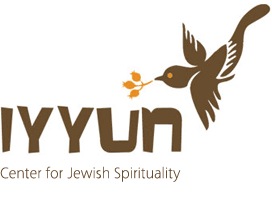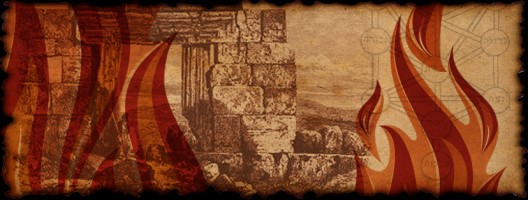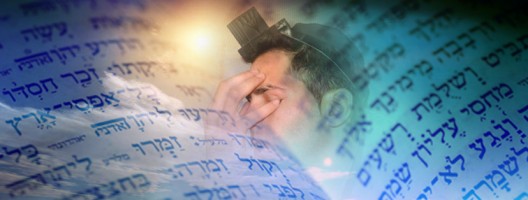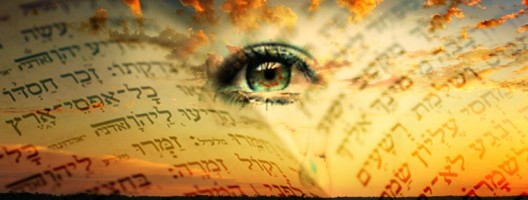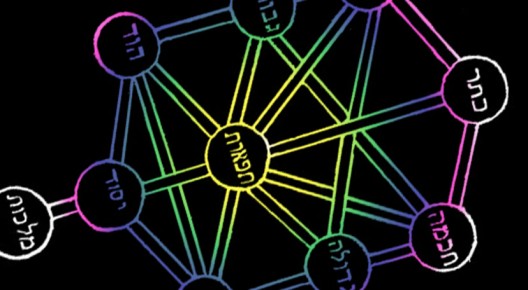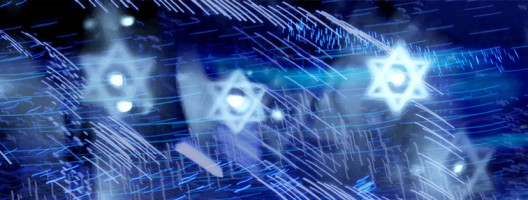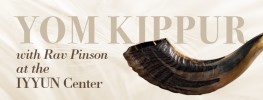Pesach is not merely the celebration of a past event. It is an open gate to spiritual liberation that manifests every year, in every generation.
Read more...To err is human, we all make mistakes. “There is no righteous person on this earth who does [only] good and does not err,” the wise King Shlomo wrote.
And yet despite the fallibility of human beings, as a tremendous kindness, God has given us teshuvah—a way of returning to God by acknowledging our errors and resolving not to repeat them. This is not only a way to repair our mistakes but perhaps even to alter the past. Without teshuvah, life would be quite hopeless. Without a means to unshackle ourselves from our negative past, we would be forever crushed by the burdens of our past errors.
Teshuvah is essential for creation; in fact teshuvah was fashioned before the actual creation, according to the Talmud (Pesachim 54a.) The Zohar writes that prior to creating this physical world, the Creator conceived the notion of teshuvah and said, “Soon, I am going to create mortal human beings, but I do so on one condition: when they, because of their iniquities, turn to you, you must be prepared to erase their faults.”
A world imbued with teshuvah is a world of optimism, life and genuine opportunity, for regardless of our current state, we have the power to reorient our life and leap over any obstacles generated by our past deeds. teshuvah affords us the freedom to liberate ourselves from the past and begin anew, rejuvenated and revitalized.
Regret and acceptance
Classic Torah commentaries contend that the principal ingredients of teshuvah are regret-charata and acceptance-kabbalah.
True regret requires a recognition of the negative act and a firm resolution – made consciously and with a whole heart — not to repeat it.
But we know well that we tend to forget our resolutions. Indeed, forgetfulness is the root cause of transgression. Often, were it not for assistance from above to overcome our negative temptations, which are so good at causing memory lapses, we would not succeed, as the Talmud tells us (Kiddushin 30b). Therefore, it is essential to always keep in mind that we are sinners – and always close to falling into transgression – and that God alone constantly rescues us.
But how can we, realizing that our sin is so deeply ingrained, have true regret over the past? So, too, how can we resolve not to sin in the future, when our experience shows clearly that without God’s help, we will certainly lapse again?
In truth, remorse over the past indicates an acute awareness of our lowliness – an awareness which must be engraved in the heart. In fact, the Hebrew word charatah, meaning “remorse” is related to charitah “engraving.” Once this awareness is so engraved, we stand a better chance of never again forgetting our history and slipping. This act of engraving, in turn, creates within our hearts a receptiveness to God’s mercies. Thus we can accept kabbalah, God’s mercy, with an absolute trust that God will save us from the bitterness of our soul and strengthen us to choose wisely in the future.
Four types of teshuvah
Early Jewish works of ethics speak of four categories of teshuvah:
- Teshuvat HaBa’ah-literally teshuvah “of what comes next” – this teshuvah that occurs when we refrain from repeating a transgression when we find ourselves in the same condition or environment that had engendered a previous misdeed.
- Teshuvat HaGeder-literally teshuvah “of the fence” – in the process of doing teshuvah, we erect for ourselves additional barriers and restrictions so that we may not be tempted to transgress. We deny ourselves even things that are permitted to us so that we will not inadvertently step over the line and fall.
- Teshuvat HaMishkol-literally teshuvah “of the measure” – this is penance commensurate to the transgression. We inflict discomfort on ourselves equivalent to the measure of pleasure we had enjoyed from committing the transgression.
- Teshuvat HaKatuv-literally teshuvah “of what is written” – we accept upon ourselves the equivalent of the Divine judgment as written and detailed in the Torah.
Teshuvah does not does not necessitate depriving or neglecting the body, according to the Baal Shem Tov — on the contrary, “a small hole in the body is a colossal cavity in the soul.” There are countless other means to refine ourselves such as giving charity or studying Torah. And am even better way is to transform the body so that whatever part of the body one used to commit an offense – a mouth to speak gossip or lie, a hand to strike someone – is re-energized to do good – a mouth to speak words of Torah, a hand to give to charity.
Verbal confession
In addition to regretting past deeds and resolving to do better in the future, most commentators include confession-viddui as another integral component of teshuvah.
Teshuvah is not complete until we articulates what went wrong in the past as well as verbally commit to change in the future. Why is this? Why do we need confession? Why is verbalization so integral to the process?
There are many reasons, but the ones we will explore here are related to the Yom Kippur service, where we confess our sins a number of times. On the most basic level, speaking gives voice to our thoughts, thus making them clearer, crystallized and structured. By articulating our thoughts, we unveil a deeper understanding of the matter at hand. Thoughts, as they exist in the mind, can remain elusive and unstructured. However, when these same thoughts “descend” into articulated language, they become comprehensible and coherent.
What’s more, not only do thoughts become clearer and more comprehensive when spoken aloud, they also become more of a reality. Words create our reality. When something is verbalized it seems to us all the more real.
Verbalization of teshuvah works the same way. Until our thoughts of teshuvah that germinate in the mind are verbalized, they remain elusive and vague. Through speaking about it and concretizing our repentance, our regret and resolve become all the stronger. Speaking endows the thoughts of change with a tangible reality, and the thoughts then attain permanence.
Additionally, “voice arouses intention,” which is a principle regarding the verbalization of all prayers and the reason why prayer is spoken and not left in the mind. It is through the verbalization of teshuvah that our inner feelings of wanting to return to God are revealed. The more we speak about a feeling of the heart, the more augmented and real the feeling becomes, and our teshuvah becomes more intense. What’s more, even if we had not yet resolved to undertake the journey to transform, our speaking about it will eventually bring us to do it.
Yom Kippur: a day of teshuvah
Yom Kippur was chosen as a day of teshuvah because it was the original day of forgiveness at the time of the birth of the Jewish nation.
A mere six weeks following the monumental encounter with God at Sinai, when the absolute oneness of the Creator was clear to the Israelites, they danced around the golden calf and proclaimed, “this is the god that took us out of Egypt.” Forty days of prayers elicited for them forgiveness, and then Moshe went up the mountain again for forty days, and when he descended this time, with the second set of tablets, he found a people eagerly awaiting his return and the Torah he was bringing.
That day was the tenth day of the seventh month of Tishrei, the day to be designated by the Torah as Yom Kippur.
Yom Kippur became the one day of the year that embodies the concept of teshuvah most intensely. In the words of the Rambam – Maimonides: “Though teshuvah is appropriate at all times of the year, during the ten days between Rosh Hashanah and Yom Kippur it is more appropriate, and it is accepted immediately. Yom Kippur itself is a time of teshuvah for all, and it is a cessation of forgiveness and absolution for the people of Israel.” (Hilchos Teshuvah 2: 6-7)
The Day of Atonement
“The essence of the day of Yom Kippur brings atonement,” the Talmud declares (Yuma). The day of Yom Kippur calls forth sublime measures of holiness, which are able to eclipse and eliminate all transgressions. Although the Talmudic sages wage a debate – as to whether or not the day itself absolves us even when we don’t do teshuvah — all opinions are in agreement that the essence of the day itself brings atonement. The debate is limited to the question whether the individual must set in motion this process through active participation by doing teshuvah, or if the day atones through mere passive participation by desiring teshuvah. What sense would it make to forgive an individual who makes no effort and doesn’t even desire forgiveness?
Therefore, the bare minimum is needed – that is, we must be at least passively accepting of forgiveness, and we must not interfere with the healing power of Yom Kippur. But, in order to achieve a complete and total teshuvah, we need to partake fully in the teshuvah process. Genuine teshuvah is attained when we can fuse the inspiration from above with the perspiration from below-when the lofty levels that are revealed from on high permeate and lodge deeply into our consciousness, becoming part of our every day reality.
Shabbat Shabbaton
Yom Kippur includes both these aspects: 1) it is a time when “the essence of the day brings atonement” as a revelation of unconditional love from above; 2) it is a time when we have reached the full potential of our own activities, beginning with the introspection during the month of Elul, and culminating with the end of the “ten days of awe.”
These two complimentary ideas are alluded to in the two verses in the Torah which mention Yom Kippur as a day that is a Shabbat Shabbaton – a Shabbat of total rest:
- Shabbat Shabbaton he lachem (Leviticus 16:31), which means “A total day of rest it [literally she] will be to you”
- Shabbat Shabbaton hu lachem (Leviticus 23:32), which means “A total day of rest it [literally he] will be to you”
Why twice – the first in feminine form, the second in masculine? The feminine represents the receiver, reflecting the one who is passively receiving revelation from above. The masculine represents a proactive stance. On Yom Kippur there is a melding of the two, beyond duality, beyond separation.
A day of transcendence, a time of immanence
On Yom Kippur, we aspire to operate on a level of transcendence, striving to mimic angelic behavior. Yom Kippur is a day of rest from normative bodily necessities. The restrictions of the day are not meant to bring suffering to the body (if inflicting pain was the intention there would be many much more effective ways of doing so), rather, the focus here is to cease operating in the normative physical sphere and ascend to function angelically. It is a day dedicated to the achievement of transcendence of the physical, as well as a transcendence of all negativity and transgression.
While every other day of the year we may struggle with our own inner Satan, on Yom Kippur, we experience a transcendence of all negativity and deprecation. The Hebrew word for Satan, ha’satan, which describes confining ego-consciousness, has the numerical value of 364. From this we learn that on 364 of 365 days of the year, we may struggle with our ego-oriented self, but on one day — Yom Kippur — we are given the power to completely transcend these limitations and be angelic.
There is a total materialistic transcendence, a “rest” from all things physical as we become angelic. We rest from all physical activities, such as eating, drinking, marital relationships, even from walking/movement, represented by the prohibition against wearing leather shoes. Many have the custom to stand as much as possible during the prayers, also to mimic angelic activity. Just as angels are peaceful towards each other, we too, ask forgiveness from one another. During the course of the prayers, a white robe (kittel) and white prayer shawl (talit) are worn in imitation of angels who “wear” pure white.
On Yom Kippur we recite loudly the Baruch Shem prayer, “Blessed be the name of His glorious kingdom forever and ever,” since Moshe heard this verse of praise from the angels on high and later taught it to the nation of Israel.
And yet, the point of elevation of Yom Kippur is in the downward return, when we are able to bring the inspiration from above into our day-to-day lives here below.
On Yom Kippur, we are advised to remind oneself of the sons of Aharon who died on this day “when they approached God.” According to mystical thought, they transcended in spiritual ecstasy, in a state of “withdrawal without return.” So deep was their sense of transcendence, they were not able to return and so they died. By recalling their deaths, we are reminded that the most important part of the transcendent experience of Yom Kippur is drawing the inspiration down into our everyday reality. To experience a ratzu, an urge and deep will to transcend and be angelic, together with shuve, the capacity to return.
To bring a korban is to take a physical entity—in Temple times this was an animal, bird or wheat—and convert it into holiness. Then, this was achieved when the offering was consumed by the Divine fire on top of the altar. Today, we can achieve the same internally when we relinquish and surrender our actions to God.
Read more...The reading of the Torah is called Kriat HaTorah, the word keriah meaning "to call out," as in one friend calling out to another. When we read the Torah, we call out to God and, thus, bring down the same energy that gives power to the verses we are reading.
Read more...Kabbalah teaches that there are fifty ‘gates’ or levels on our spiritual path, and the fiftieth gate is bina, absolute clarity and freedom. This teaching follows the pattern of the Torah law of Yovel, the Jubilee year, which occurs on the fiftieth year of a fifty-year cycle.
Read more...What is their story? What are they telling us? Most clearly they are telling us is to simply quiet down. Often we become so entangled in the noise and onrush of day-to-day life that we fail to truly notice that which is important. Almost habitually we go around stressing about the future or violently regretting the past, that we neglect to focus on the present. The mind tends to settle in all directions of time except the moment. The gentle hissing sound of the flame begs us to slow down, relax, become more introspective, reflective, and take notice.
Meditating on the flame of the menorah is integral to the Chanukah lights. Unlike the Shabbat candles, for example, which are kindled to add kavod/honor to the ensuing day or for the purpose of oneg/pleasure so that we eat in light and do not stumble in darkness, the flames of the menorah are lit for no personal use whatsoever, rather simply, as the Rambam writes, “to manifest and reveal the miracle” or in the words of the prayer following the lighting: “These lights are holy. Permission is not granted to use them, merely to look at them.” Since looking is all that can be done, Chassidic teachers and Kabbalistic masters have suggested we do so. Once we light the flames we should sit gently next to the lights and look, notice and listen to them.
What is their story? And what are they telling us? Most clearly they are telling us is to simply quiet down. Often we become so entangled in the noise and onrush of day-to-day life that we fail to truly notice that which is important. Almost habitually we go around stressing about the future or violently regretting the past, that we neglect to focus on the present. The mind tends to settle in all directions of time except the moment. The gentle hissing sound of the flame begs us to slow down, relax, become more introspective, reflective, and take notice.
So we sit there quietly and listen, become attentive and introspect. In due time, as the light fills our imagination we become fully aware and realize that there is nothing fundamentally outside and besides the Ultimate Light.
Looking at the flames, what do we see? Noticeably there are three basic elements to the fire; the flame, the wick and the oil or wax. Says the Zohar; the body is similar to the wick, the flame itself is analogous to the divine presence that rests above the head, and the oil that fuses the two together, allowing the flame to join and remain connected with the wick is our ma’asim tovim-good and illuminating deeds. (3:187a)
“The wise man’s eyes are in his head” (Koheles. 2:14.). This means, says the Zohar, that the wise are continuously aware of the divine presence above their heads. More importantly, their awareness informs their actions and insures good deeds and proper comportment. Taking notice of the flames inspires us all to do the same.
In truth we are like a flame. The totality of who we are is reflected within the flame. The spiritual elements of self, the fire reaches upward, the physical body which gravitates downward is the wick, and our good deeds allows for a full integration among all aspects of self, body and soul.
The flame is who we are. Appropriately, the Hebrew word nefesh-spirit, comprised of the three letters, nun, pei, shin, is an acronym for ner/flame, pesilah/wick and shemen/oil.
Penetrating a bit deeper we begin to notice the fire itself and become aware of the different shades of color within the flame. Essentially, there is the dark, intense blue light on the one hand, and on the other extreme a white luminous, almost transparent light.
What do these colors represent? The Zohar describes the following;
“In the flame itself there are two lights: one white and luminous, the other black or blue. The white light is the higher of the two and rises steadily. The black or blue light is underneath the other, which rests on it as on a pedestal. The two are inseparably connected, the white resting and being enthroned upon the black…This blue or black base is in turn attached to something beneath it which keeps it in flame and impels it to cling to the white light above. This blue or black light sometimes turns red, but the white light above never changes its color. The lower light, which is sometimes black, sometimes blue, and sometimes red, is a connecting link between the white light to which it is attached above and to the concrete body to which it is attached below, and which keeps it alight. This light always consumes anything which is under it or which is brought in contact with it, for such is its nature, to be a source of destruction and death. But the white light which is above it never consumes or destroys and never changes. (1 Zohar. p. 51a.)
So there are two differences, one is that the darker light continually fluctuates and changes colors, whereas the white light is a constant. Another variant is that the darker fire, unlike the white light, needs to consume and destroy another to exist.
This lower more dense fire is a reflection of all of physical life, in which life feeds off death and everything in nature is continuously altering and putting on different coats. In the physical plane of existence, in order for one living organism to survive it must consume another form of life. After the body has served its purpose, it slowly rejoins the earth and transforms into the soil upon which new life grows. Mineral becomes plant, plant becomes animal, animal man, and man in turn returns to earth.
Higher, white fire is our spirituality, that which does not need to overwhelm or negate the other to exist. The whiter and more transparent the shade of fire becomes the deeper the level of soul it represents until the peak of the flame, a point in which the transparent fire becomes almost invisible and dips into the infinite space and merges.
Within the human psyche there are levels of varying consciousness. The outermost manifest surface self is our autobiography, that which is in a constant state of motion and movement, so long as we are sensing this part of self is expanding, much like the lower fire that fluctuates, jumps around, changes colors depending on the heat. Higher and deeper within us rests the core of self, the essence of soul. The self that is the unchanging that registers the changing, the continuous that observes the discontinuous, the uninfluenced that informs the influenced.
The ecstatic dancing flames as well as the more subdued gentle flames mirror life itself. Every moment we live, and with every breath we take we are constantly moving, shifting back and forth, inhaling and exhaling, expanding and contracting. Meta-physically speaking, every moment of life we are continually being recreated, becoming embodied and expiring and then re-embodying again.
The movement upwards and beyond is ratzu-a deep desire to expire and lift off, whereas the movement downward and within is shuv-a deep awareness that the purpose is within the here-and-now. The constant flickering of the lower flames jumping and leaping higher is the ratzu. Shuv is the more settled and clearer whiter light. The spiritually less evolved levels of self desire expiration, to transcend world, and in the process neglect body, yet the deepest awareness is one that is in total harmony with its divine purpose, which is to be within the world, as you are intentionally embodied, and there catapult a transformation. Obviously, the shuv reality is a profounder level and state of bitul-negation of separate self, as one is more in tune with the divine reality and the ultimate purpose.
Both the ratzu and shuv serve and enhance each other. The ratzu ensures a lightness of being–that our involvement with world and body does not devolve into preoccupation and eventual existential anxiety, whereas the shuv ensures that we do not slip fully into ecstasy and eventually expire.
Healthy living depends on balance, both physically as in breathing and spiritually as in ratzu and shuv. “Ve’ahavta Es Hashem“-You shall love Hashem. True love is movement in both directions; ratzu and shuv, drawing closer and moving back, rising upward and returning. The Hebrew letters that comprise the word ve’ahavta–vav/6, aleph/1, hei/5, beis/2, tof/400–has the numeric value of 414, twice the value of the word or-light–aleph/1, vav/6, riesh/200= 207. Genuine love, on all levels of reality, has direct light, as in giving, contracting and reaching out, and reflective light, as in receiving, expanding and opening up.
The entire cosmic inner structure and dynamics are reflected in the Hebrew word ner-candle. The word ner (nun/50, riesh/200 = 250) has a number equivalency with The Name (havaya/26), the Tetragrammaton, the ineffable transcendence, as the name is joined with ado-noi/65, with elokim/86 and with eheyeh/21 (26+65 = 91; 26+86 = 112; 26+21= 47), in total 91+112+47= 250.
Havaya represents the utter transcendence, beyond all definitions or relationship with time or space, and yet havaya is projected within ado-noi-Master of the world, elokim-Lord of the world, and eheye-the ever unfolding process of becoming. There is absolute oneness and unity.
Yet all shades of the flame rests upon empty space. Just below the flame, where fire and wick converge, there appears to be an empty region. The fire begins slightly removed from the wick, or so it seems. Ultimately, if we wish to exude light, warmth and wisdom we must first disappear, attain a measure of bitul, and then the light we project outwardly will be a warming, gentle and overwhelmingly inspiring.
Before we begin reading the Torah, we open the ark and recite a passage from the Zohar.
The Baal Shem Tov once said that when the ark is opened and we recite these words with purity, faith and from the depths of our heart, God will fulfill our requests, whether fully or in part. It is a time of extreme holiness, as the Alter Rebbe, R. Schneur Zalman, once said: “When the ark is opened, the world of the Ark of the Covenant of God is opened as well. Herein lies all the exertion and self-sacrifice invested in all the Torah scrolls that we have ever written. The angel Michael then proclaims, “God is in His holy sanctuary, let all the world fall silent before Him!” At this time, when we say this prayer from the depths of our heart, the angel Michael intercedes on our behalf.”
Only free people have names. A slave is a nameless statistic, with no independent personal identity or existence. Likewise, when we are slaves to our emotions and reactions, we have no independence from the stimuli or influences in our lives.
Read more...